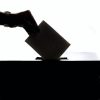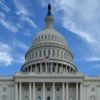Five Colorado historians gathered for a (virtual) roundtable Wednesday night to discuss the sordid history of the Ku Klux Klan in Colorado and the History Colorado museum’s recent unveiling of the Klan’s Denver membership ledgers.
Colorado, and Denver in particular, was a hotspot during a resurgence of Klan activity in the 1920s. The Klan sought to impose their nativist, white supremacist worldview in Colorado by gaining economic and political control and by targeting Black Americans, Hispanic Americans, Jews, Catholics, and other non-White and non-protestant groups through harassment, intimidation, and violence.
The Klan’s Denver membership records from 1924 to 1926, which History Colorado just released to the public in a searchable digital format, contain nearly 30,000 names – a staggering number that represents a third of the 107,000 adult white males living in Denver at the time.

“As we saw, the second Klan and other hate groups thrive when history is widely misunderstood or even deliberately manipulated or distorted,” said panelist Jared Orsi, a professor of history at Colorado State University. “That’s why the preservation of accurate primary documents like History Colorado’s Klan membership roles is so so important, and to guard against the spread of falsehood it is essential that they be made publicly accessible.”
The ledgers contain names of members, their home addresses, business addresses, and more. The museum is developing an interactive map showing Klan activity in Denver based on the information in the ledgers. They also hope that by making the ledgers easily accessible to the public, other historians and researchers might be able to shed light on various symbols and features of the ledgers for which the museum has little context.
Through a quick search of the ledgers, I found one Klansman, Clyde G. Beardsley, who worked directly accross the street from the Colorado Times Recorder‘s office on Blake street. Many klansmen lived and worked on Denver’s historically Black Welton Street in Five Points. Other entries include workplaces like the state Capitol building, City Hall, and the Denver Post, a testament to the Klan’s vast political influence during those times.

For example, Benjamin Stapleton, who served as Denver’s Mayor in the 1920s, was a high-ranking member of the Ku Klux Klan, and pledged to use the power of his office to advance the Klan’s white supremacist agenda. His legacy has made a lasting impact on the city that has cycled in and out of the media spotlight over the past several years, from the Stapleton neighborhood’s decision to change its name, to his great-grandson Walker Stapleton, who served as Colorado Treasurer and then lost the race to become Colorado’s governor. Walker Stapleton initially touted the political legacy of his great-grandfather before distancing himself from his family history during his run for governor.
Much of Wednesday night’s discussion centered around the ripple effects of the Klan today, particularly regarding the nativist rhetoric that has taken root in the far-right.
“While the KKK with their hoods, robes, and burning crosses may be the American symbol of white supremacy and terrorism, there are other groups who share their sentiments and values,” said University of Colorado History Professor William Wei. “What was said at KKK rallies is almost word for word what is being said today by the alt-right, such as ‘put America first,’ which means put white Americans first to the exclusion and detriment of people of color.”
“There’s really no need to wonder where the KKK in Colorado has gone. It has mutated into some other hate groups,” Wei said, pointing to the proliferation of white nationalist hate groups during Donald Trump’s presidency. “These hate groups have created a toxic atmosphere that has poisoned politics.”
The panel also pointed out how the Klan promised “law and order,” a phrase that’s commonly used by conservatives today.
Regis University History Professor Nicki Gonzales said that an influx of immigrants, particularly Catholics and Jews from Southern and Eastern Europe between the 1880s and the 1920s, led some white protestants to feel uneasy and even gave way to conspiracy theories about the Pope taking over the country. “People were hungry for that law and order that was promised by the Klan,” Gonzales said.
In 1921, the Klan officially announced its presence in Colorado in the Denver Times as follows: “We are a law and order organization assisting at all times the authorities in every community in upholding law and order.”
Asked if the anti-immigrant sentiments promoted by the Klan in the 20s are the same as those promoted by Republicans today, top Colorado historian Tom Noel said, “I fear they are, considering that our most recent president ran on building a wall.”
Gonzales underscored the lasting impact of the Klan’s goal of economic domination, saying that “to understand the inequities of today’s society, we really have to go back to something like the 1920s Klan where certain practices were put into place that would disadvantage certain populations for decades to come.”
“The focus on businesses was a tool that the Klan used to keep non-member businesses down, and if you were a minority person who owned a business, [you face] that double oppression of being a minority person in society and then having a boycott placed on your business because you’re not eligible or you’re not ‘American enough,’ as determined by the Klan,” Gonzales said. “The economic effects of the actions and the policies of the Klan in the 20s would reverberate for decades.”



